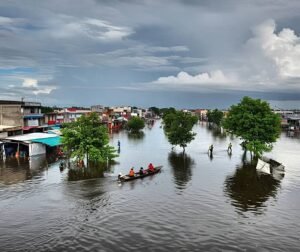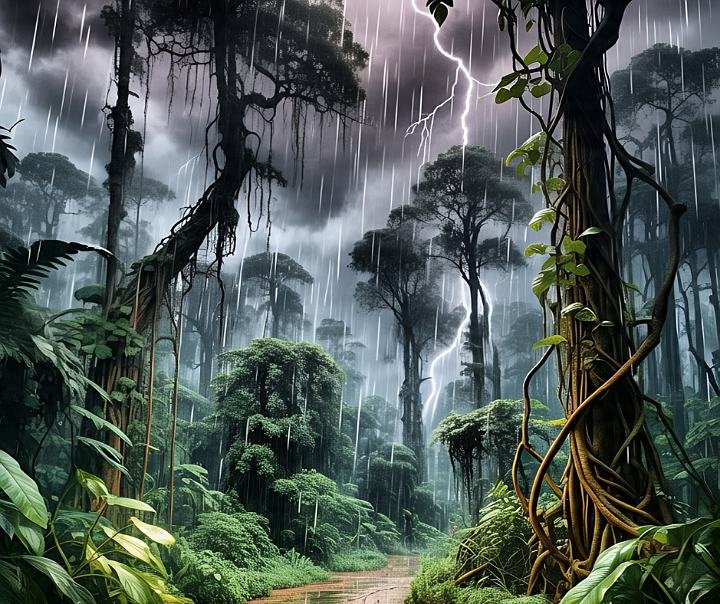Severe Flood Alert: Everything You Need to Know – Info, Tips, and Fun GK Questions!
Hey there, friends! Today, we’re diving into something super important: Severe Flood Alerts. Floods are one of those natural disasters that hit India hard, especially during the monsoon season when rivers go wild. In this post, I’ll break down what a severe flood alert is, why it happens, how to stay safe, and even throw in some cool General Knowledge (GK) questions for you quiz buffs out there. So, grab a cup of chai, and let’s get started!
What’s a Severe Flood Alert?
A Severe Flood Alert is a heads-up from authorities like the India Meteorological Department (IMD) or the Central Water Commission (CWC) warning people about a high risk of flooding. It’s like the universe saying, “Yo, get ready, things might get wet!” These alerts are issued when heavy rain, overflowing rivers, or other factors could cause serious damage to lives, crops, or property.
For example, just recently on June 1, 2025, a flood alert was issued in Tripura because the Khowai River and Howrah River were dangerously close to their warning levels. Alerts like these are meant to keep us on our toes and help us take action before things get out of hand.
Why Do Floods Happen, and What’s the Impact?
Floods can pop up for a bunch of reasons, like:

- Heavy Rainfall: Monsoons bring buckets of rain, and sometimes it’s just too much for the ground to handle.
- Rivers Overflowing: Big rivers like the Ganga, Brahmaputra, or Yamuna can spill over their banks.
- Dam Failures: If a dam overflows or breaks, it can unleash a wall of water.
- Landslides: In hilly areas, landslides can block rivers, causing water to back up and flood.
- Climate Change: Thanks to global warming, we’re seeing more extreme weather, making floods worse.
What Happens When a Flood Hits?
- Loss of Life and Property: Floods can be deadly and destroy homes.
- Crop Damage: Farmers lose their crops when fields get submerged.
- Infrastructure Chaos: Roads, bridges, and buildings take a beating.
- Health Risks: Stagnant water can spread diseases like dengue or malaria.
Flood-Prone Areas in India
Some parts of India get hit by floods almost every year. Here’s a quick list:
- North India: Bihar, Uttar Pradesh, Assam, and West Bengal (thanks to the Ganga and Brahmaputra river basins).
- Northeast India: Assam and Meghalaya, where a red alert was recently issued.
- Western India: Gujarat and Maharashtra, especially coastal areas.
- South India: Kerala and Tamil Nadu often face coastal flooding.
If you live in these areas, keep an eye on local news and alerts from the IMD website to stay prepared.
How to Stay Safe During a Flood
Nobody wants to be caught off guard when a flood hits, so here are some practical tips to keep you and your loved ones safe:
- Stay Updated: Follow alerts from the IMD or trusted news sources like NDTV or The Times of India.
- Make an Emergency Kit: Pack essentials like medicines, water, a flashlight, and dry snacks.
- Head to Higher Ground: If a flood’s coming, move to a higher spot away from low-lying areas.
- Switch Off Electronics: Floodwater and electricity don’t mix—turn off appliances to avoid shocks.
- Drink Safe Water: Stick to boiled or bottled water to avoid waterborne diseases.
Fun GK Questions and Answers on Severe Flood Alert
Let’s spice things up with some General Knowledge questions! These are great for school quizzes, competitive exams like UPSC or SSC, or just impressing your friends.
Question 1: Which Indian agency is primarily responsible for flood management?
Answer: The Central Water Commission (CWC) and National Disaster Management Authority (NDMA). Check out more on the CWC website.
Question 2: What index is used to measure the severity of flash floods?
Answer: The Flash Flood Magnitude Index (FFMI). It helps gauge how intense a flood might be.
Question 3: Which Indian state is most affected by floods?
Answer: Bihar, because it sits in the Ganga river basin.
Question 4: What’s one of the most effective ways to prevent flood damage?
Answer: Building flood embankments, evacuating floodplains, and planting more trees.
Question 5: What’s considered the deadliest flood in history?
Answer: The 1931 Yellow River flood in China, which claimed millions of lives.
Want more GK goodies? Sites like Jagran Josh have tons of quizzes to keep you sharp!
Recent Severe Flood Alerts: What’s Happening?
Here’s a quick rundown of some recent flood alerts based on posts found on news:
- Tripura: On June 1, 2025, the Khowai River hit 22.75 meters, super close to the warning level of 23.10 meters.
- Assam and Meghalaya: The IMD issued a red alert due to heavy rain and potential flooding.
- Howrah River, Tripura: Water levels reached 10.92 meters, just shy of the extreme danger mark of 11 meters.
These updates show why it’s so important to stay tuned to local authorities and act fast when alerts are issued.
How India Handles Floods
India’s doing a lot to tackle floods. The NDMA and CWC work together on things like dam safety, flood forecasting, and disaster relief. The Dam Rehabilitation and Improvement Project (DRIP) is also strengthening over 6,281 dams across the country to prevent flood-causing failures.
Still, sometimes a lack of awareness or infrastructure gaps can make things worse. That’s why we all need to stay informed and prepared!
Wrapping It Up
Floods are no joke, but with the right knowledge and prep, we can keep the damage to a minimum. If you’re in a flood-prone area, bookmark the IMD website and keep tabs on local news. Spread the word to your family and neighbors, too—let’s keep everyone safe!
I hope this post gave you a clear picture of severe flood alerts and how to handle them. Got questions or want more tips? Drop a comment below, and don’t forget to share this with your buddies. Stay safe, stay prepared, and let’s weather the storm together!
Stay safe, folks!

